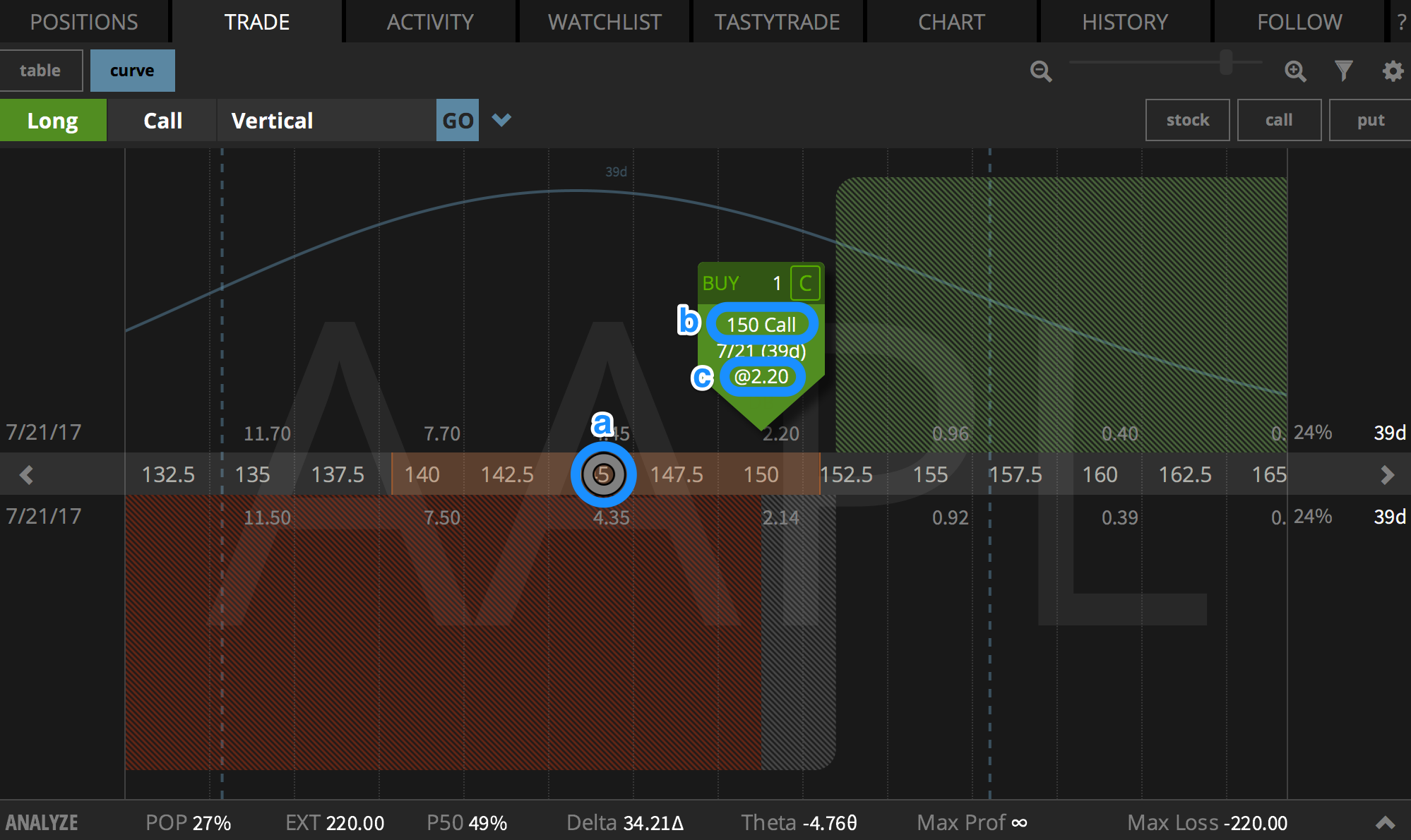What is Strike Price? Definition, Examples & Considerations

Strike price is another one of the terms every options trader must know. It is not a complex concept per se, but it is a concept you want to have a full understanding of before you begin trading.
Remember that when you buy or sell an option, you are entering into a contract with another person and agreeing on a transaction involving three things:
- A timeframe (called an expiration date)
- A price for the option (for the buyer it is called a debit, for the seller this is called a credit)
- A strike price
Because strike price is such a vital piece of the way an option is priced, it is important to understand more than just the definition of the term. It is also important to understand how a strike price relates to call options and put options. In this post, we will not only look at those things...
We will also reveal the 4 most important considerations when choosing a strike price.
Strike Price Definition
Simply stated, a strike price (also referred to as exercise price) is the fixed price at which an option contract can be exercised.
When entering a trade, strike price is important to the option buyer because it determines the price at which they can buy or sell stock in the future (or if they choose not to exercise, how much profit/loss will occur from the trade). To the seller, strike price is important at trade entry because it has a direct impact on how much credit they receive from selling the option.
Once a trade has been placed, the direction the underlying moves in relation to the strike price determines the profitability of the trade.
Strike prices are generally equidistant from one another and are usually $.50, $1, $5, or $10 wide (there are some underlyings where this isn't the case, but they are uncommon).
Seems like an easy enough concept, no? Now let’s define strike price a little further by looking at how it relates specifically to call options.
Call Options Strike Price
A call option is an agreement where a buyer has the right to buy 100 shares of stock from a seller before the option expires at a set price. What price is that exactly?
The strike price (as I’m sure you guessed)!
The purchaser of the call can choose to (but is never obligated) exercise the option at the strike price at any time, and the seller must sell 100 shares to the buyer if the buyer chooses to exercise the option contract.
If the call option expires out of the money (the strike price is above the stock price), than the seller gets to keep the credit received and the buyer loses the debit paid for the trade.
If the call option expires in the money (the strike price is below the stock price), the call buyer can exercise the option for shares of stock, or sell the option back for a profit. If the buyer exercises the option, the seller must sell 100 shares of the stock at the given strike price.
Let’s examine this further by looking at a call option strike price example.
CALL OPTION STRIKE PRICE EXAMPLE
Let’s say that I am buying a call in AAPL from you because I am expecting the price to go up over the next month or so. Since you are selling the call, it’s safe to assume that you think the price of AAPL will go down.
Right now, AAPL is trading at (a) $145.42. The call option strike price I am looking to buy at is (b) $150 (I believe that the price of AAPL will move above that strike price before expiration). If you decide to sell me the call option at the agreed upon strike price of $150, you will receive a credit of (c) $220.
I will pay you a (c) $220 debit for the chance to buy 100 shares of the stock from you at the agreed upon strike price, before the option expires.

Strike Price Example - Call Option
As the call buyer, I am looking for the option to expire in the money (the stock price is above the strike price) so that I can exercise the option.
As the seller of the call, you are looking for the stock price to remain out of the money (the stock price is below the strike price).
Now that you understand how the strike price correlates with moneyness (in the money/out of the money) and profitability for call options, let's look at put option strike prices.
Put Options Strike Price
A put option is just the opposite of a call option. With a put option, the buyer has the right to sell 100 shares of stock at the strike price before expiration.
The purchaser of the put option has the right (but not the obligation) to exercise the option at the strike price anytime before expiration and the seller must purchase 100 shares of the stock if the buyer chooses to exercise the option.
If the put expires out of the money (the strike price is below the stock price), then the seller gets to hold onto the credit they received and the buyer loses the debit paid to place the trade.
If the put option expires in the money (the strike price is above the stock price), the purchaser of the put can exercise the option for 100 shares of stock, or sell it back for a profit. If the buyer chooses to exercise, the seller must buy stock at the agreed upon strike price.
Put Option Strike Price Example
Let’s stick with the same underlying as we did before and look at strike price as it relates to a put option in AAPL.
I am buying a put in AAPL from you because I am expecting the price to go down over the next month or so. Since you are selling the put, we will assume that you think the price of APPL will go up in the short-term.
AAPL is currently trading at (a) $145.52. I'm looking to buy a put option at the (b) $140 strike price and a debit of (c) $205. You sell it to me and receive a $205 credit.

Strike Price Example - Put Option
In the above scenario (as the purchaser of the put option), I am hoping that the put option expires in the money (when the stock price is below the strike price).
Since you are selling me the option, you're hoping that the option expires out of the money (when the stock price is above the strike price) in order to keep the credit you collected when we entered into the trade.
As you can see, the strike price is one of the major inputs of how much profit or loss can occur from a trade. One comment we get from time to time is "Ok, so I understand what a strike price is, but tell me how to choose a strike price." While we cannot tell you the best strike price for a particular trade because that's very circumstantial, we can tell you some things to keep in mind when choosing a strike price.
How To Choose A Strike Price
Choosing a strike price is not too difficult when you keep these four things in mind:
- Liquidity/Volume - one of the first things you are going to want to look at when selecting a strike price is the liquidity of the underlying. (*note: on the tastytrade table page you can view the open interest and bid/ask spread). If you choose a strike price with low option volume (therefore illiquid), you may not be able to get filled on the trade or worse, you may not be able exit the trade before expiration if the underlying is illiquid.
- In the Money vs. Out of the Money - is the option you are looking to buy/sell in the money, or out of the money? Based on probabilities, in the money options are best suited for option buyers, and out of the money options are best suited for option sellers.
- Width of the Strikes - when trading any strategy containing a spread (credit spread, debit spread, iron condor, etc.), the width of the strike prices generally determines the amount of risk you are willing to take, as well as the probability of profit. i.e. A five point wide iron condor will hold significantly more risk than a one point wide iron condor, but the probability of profit and credit received will be much higher.
- Probability of In the Money/Out of the Money - Each strike price will have a different ITM or OTM probability. If you want to use probabilities/statistics to help you determine what strike price to use, checking the trade’s probability of profit (P.O.P.) is a must! This can be found on the trade page within the tastytrade trading application.
Conclusion
You should now better understand what strike price is and how it relates to profit and loss for both call and put options. Also, you now know what factors to keep in mind when determining the strike price of your next trade!
(Watch Step Up to Options to learn more about different types of option trades)
Still have questions regarding strike price? Leave it in the comments and we will be sure to answer it!
Options involve risk and are not suitable for all investors. Please read Characteristics and Risks of Standardized Options before deciding to invest in options.